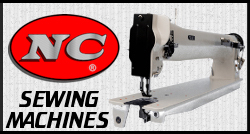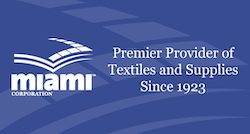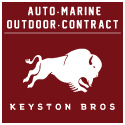-
 Michael Duncumb
3This is something I've been keen to learn since I started trimming, but unfortunately the person who taught me wasn't aware of it.
Michael Duncumb
3This is something I've been keen to learn since I started trimming, but unfortunately the person who taught me wasn't aware of it.
I've been told in the past it is important to cut certain seat panels from specific parts of a leather hide. For example I assume it would be a good idea to cut bolsters from the butt as it is the thickest part and therefore the hardest wearing. I was wondering if this is something that everyone takes note of or with modern corrective grain hides is this becoming less important?
Cheers -
 Gary Cohen
0I always make sure that there is no damage on the grain and on the reverse side. I don’t think it is very important on corrective grain hides. More importantly is using high quality skins and work out your pattern placements
Gary Cohen
0I always make sure that there is no damage on the grain and on the reverse side. I don’t think it is very important on corrective grain hides. More importantly is using high quality skins and work out your pattern placements -
 John Woolfrey
2My way may not be the best way. I pay attention to the direction in which the leather stretches and lay the pattern / mold on the hide and cut it out so the leather will stretch in the direction I want. My pattern will be molded to the curvature of the seat. When I flatten the pattern out on the leather it will show humps in the pattern and that's where the leather needs to stretch to mold to the seat. The sew foam will stretch only in one direction and I sew the leather to the foam in a direction that will allow the leather and foam to stretch to the contour of the seat. On areas like a seat cushion top side where you don't want it to stretch I would try to use the leather parts that stretch less and also lay the sew foam in a direction where the foam stretch direction is perpendicular to the leather stretch direction. For a side bolster I also sew muslin fabric to the inside of the panel (outside the foam) to support and prevent the panel from stretching. Muslin doesn't stretch. You could also glue the muslin to the knit side of the foam before you sew everything together. Having said all that, I've read that some put the stretchiest parts of the hyde to seat areas that won't stretch and hide areas that stretch the least in seat areas that would get stretched the most. I try to reinforce parts that get pressed / stretched a lot with muslin or use the foam's non-stretch direction. I also let the leather+foam stretch if the pattern needs to go over a curve. I too would like to know what others do. My guess is that leather is expensive and people mainly try to get the most out of a hyde by using as much as they can.
John Woolfrey
2My way may not be the best way. I pay attention to the direction in which the leather stretches and lay the pattern / mold on the hide and cut it out so the leather will stretch in the direction I want. My pattern will be molded to the curvature of the seat. When I flatten the pattern out on the leather it will show humps in the pattern and that's where the leather needs to stretch to mold to the seat. The sew foam will stretch only in one direction and I sew the leather to the foam in a direction that will allow the leather and foam to stretch to the contour of the seat. On areas like a seat cushion top side where you don't want it to stretch I would try to use the leather parts that stretch less and also lay the sew foam in a direction where the foam stretch direction is perpendicular to the leather stretch direction. For a side bolster I also sew muslin fabric to the inside of the panel (outside the foam) to support and prevent the panel from stretching. Muslin doesn't stretch. You could also glue the muslin to the knit side of the foam before you sew everything together. Having said all that, I've read that some put the stretchiest parts of the hyde to seat areas that won't stretch and hide areas that stretch the least in seat areas that would get stretched the most. I try to reinforce parts that get pressed / stretched a lot with muslin or use the foam's non-stretch direction. I also let the leather+foam stretch if the pattern needs to go over a curve. I too would like to know what others do. My guess is that leather is expensive and people mainly try to get the most out of a hyde by using as much as they can. -
 Michael Duncumb
3@John Woolfrey Thanks for the advice, I think you are spot on with your technique if you ask me. I try as much as I can to use the natural stretch of the leather to help it form around curves. As Gary said, with corrective grain hides we do have a luxury whereby you have a fairly free reign over where the hide is cut and utilising more of it.
Michael Duncumb
3@John Woolfrey Thanks for the advice, I think you are spot on with your technique if you ask me. I try as much as I can to use the natural stretch of the leather to help it form around curves. As Gary said, with corrective grain hides we do have a luxury whereby you have a fairly free reign over where the hide is cut and utilising more of it.
You've raised some very good points on using the stretch of the sew foam to manipulate the leather too. I tend to buy foam that has a good 4 way stretch so that's not an issue, but I will a bit of research into using a 2 way stretch backing material to help the cover form better. -
 Jordan Reynolds
0Great advice I never thought of looking at the stretch of each individual piece.
Jordan Reynolds
0Great advice I never thought of looking at the stretch of each individual piece.
I always stretch my leather out on my my bench top using clips. Any body else do this when marking out leather ? -
 John Woolfrey
2I pull it tight (without stretching it) and hold it down with lead weights or masking tape.
John Woolfrey
2I pull it tight (without stretching it) and hold it down with lead weights or masking tape.
Welcome to The Hog Ring!
This forum is only for auto upholstery pros, apprentices and students. Join today to start chatting.
More Discussions








- Terms of Service
- Useful Hints and Tips
- Sign In
- Created with PlushForums
- © 2025 The Hog Ring



